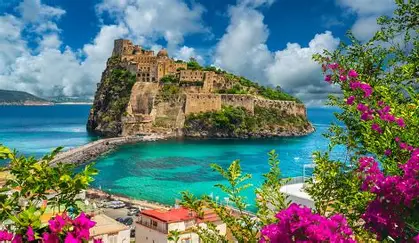
Thenuri Thesara
7 Underrated Islands For 2025 Escapes
Big-name hotspots like Santorini and Bali will always have their pull, but let’s be honest — sometimes the crowds can make it hard to soak in the magic. That’s why more savvy travelers are turning their eyes toward quieter island escapes where the views are just as breathtaking, but the pace is wonderfully unhurried. Think Croatia’s remote Lastovo archipelago, protected as a pristine nature park, where life moves to the rhythm of the sea. Or Albania’s Gjirokastër, a UNESCO World Heritage treasure with layers of history you can walk right through. And then there’s Mexico’s car-free Isla Holbox, where the biggest traffic jam you’ll find is a gentle shuffle of bicycles and sandy feet. From soaking in volcanic thermal springs to swimming alongside whale sharks in crystal-clear waters, these under-the-radar gems are set to shine bright in 2025 — and they’re waiting for travelers ready to trade the crowds for something a little more real.
1. Lastovo, Croatia – Adriatic Serenity
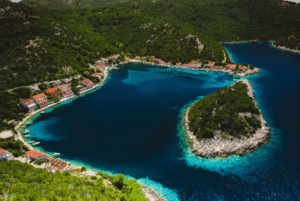
If you’ve ever dreamed of finding a slice of the Adriatic completely untouched by crowds, Lastovo might just be your paradise. Tucked away south of Korčula, this is Croatia’s most remote inhabited island, and it feels like a place the fast pace of the modern world simply forgot. Part of a protected nature park that includes 46 tiny islets and their surrounding waters, Lastovo has been quietly preserving its wild beauty. In fact, for decades, military restrictions kept the island closed to outsiders until the late 1980s, unintentionally safeguarding its unspoiled landscapes and way of life. Here, the sea is so clear you can see far beneath the surface — far beyond what’s common in more developed parts of the coast — and the nights? They’re magical! With fewer than 1,000 residents and almost no light pollution, Lastovo has earned its title as “The Island of Bright Stars.” On a clear evening, the sky becomes a glittering dome, offering some of the best stargazing in Europe. It’s a natural dark-sky experience you won’t need special equipment to enjoy — just look up.
Exploring by boat is where the island’s soul really shows. You can wind through hidden coves, dramatic cliffs, and untouched beaches, including the famous Saplun — a stretch of dazzling turquoise water so secluded it can only be reached from the sea. Beyond, the cluster of Lastovnjaci islets pulls you further into open waters toward Italy. One of the highlights is the Struga lighthouse, standing proudly on a cliff since 1839, offering sweeping views that make you feel like you’re on the edge of the world.
Tourism here is deliberately low-key. There’s just one hotel — Solitudo in Pasadur — plus a scattering of centuries-old stone homes lovingly turned into guest rentals. Villages like Lučica, a medieval fishing port from the 15th and 16th centuries, are protected from modern development, so their cobbled lanes and historic façades look much like they did hundreds of years ago. On Lastovo, the charm is in what it doesn’t have: no noisy resorts, no crowded promenades — just space, silence, and the slow rhythm of true Mediterranean life.
2. Thassos Greece Budget-Friendly Escape
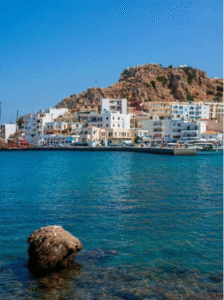
Dreaming of a budget-friendly getaway that doesn’t skimp on charm or adventure? Say hello to Thassos, Greece’s northernmost island, which savvy travelers are increasingly picking over the bustling Cycladic hotspots. Here, you’ll find prices that won’t break the bank, with places to stay costing anywhere from €15 to €50 per night and total daily budgets comfortably sitting between €40 and €60. Compared to the likes of Santorini or Mykonos, that’s about half the cost—making Thassos a golden option for stretching your travel budget.
Getting there is easier and cheaper than you might think. Fly into Kavala International Airport using budget airlines like Ryanair or easyJet, especially during shoulder seasons like May to June or September to October when accommodation prices drop about 30%. Once landed, hop on a ferry from nearby Keramoti port to Thassos Town for just €4 to €5—a quick 40-minute ride that’s far more wallet-friendly than complicated connections or pricey charter flights you find for other islands.
If lounging beachside is your thing, you’re in luck: Thassos offers an unbeatable beach experience without the usual premium fees. All the beaches have free public access, and sunbed rentals come with a laid-back deal—you usually just need to buy a coffee for around €3, and the sunbed is yours to enjoy. Contrast that with the typical €8 to €10 sunbed rentals elsewhere. Beaches like Paradise Beach, the sweeping 2-kilometer stretch of Golden Beach, and the stunning white pebbles of Marble Beach offer gorgeous spots to relax without any hidden charges.
Getting around won’t drain your travel fund either. Public buses link the main towns at very reasonable fares between €1.80 and €2.50 per trip. Renting a scooter costs about €15 to €20 a day, while sharing a rental car can bring costs down to €30-40 per day split among friends or family. With this variety of transport options, adventuring out to hidden gems like Giola Lagoon or exploring ancient sites like the Agora (just €2 entry) becomes easy and affordable.
Hungry? Thassos’s food scene serves up authentic, wallet-friendly eats that won’t disappoint. Traditional tavernas offer hearty meals for €8 to €12, while a quick gyro can be had for just €2 to €4. Local bakeries provide tasty bites from €1 to €2. Even those aiming for a little luxury find the island kind to their purse strings, a budget study recorded daily expenses around €125 per person when including €50 for accommodation and €38 for upscale dining, which is still way cheaper than many other Greek hotspots.
Accommodation options here suit all kinds of travelers, from campers pitching tents at Pefkari Beach to family-friendly stays like Villa Katerina in Skala Potamias. Beachfront hotels such as Alexandra Beach Hotel in Potos offer more comfort, and many self-catering studios come equipped with kitchenettes—perfect for saving even more by cooking your own meals. If you’re watching your spending closely, places like Hotel Prinos offer comfy rooms designed with budget travelers in mind.
Ready to explore Thassos without emptying your wallet? This Greek island gem might just be your next unforgettable and affordable escape.
3. Ischia Italy Thermal Spa Retreats
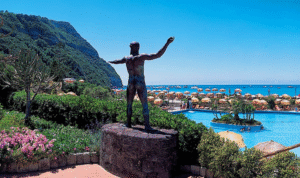
Ever dreamed of escaping to a place where ancient healing traditions and modern spa luxury meet? Welcome to Ischia, Italy’s volcanic island gem nestled in the Gulf of Naples. Here, natural thermal waters heated by underground volcanic forces flow between 56°C and 77°C, offering what Italian spa expert Raffaella Dallarda calls “terme experiences for all needs”—from soothing dips to health- enhancing treatments.
Ischia’s thermal scene offers something for everyone, with three main types of spa experiences depending on what you’re after and your budget. For those wanting top-tier pampering, places like the San Montano Resort & Spa blend clinical-grade thermal treatments with elegant accommodations and stunning 360-degree views of the bay. Rich thermal waters packed with minerals like salt, sulphates, and bicarbonates flow through these sophisticated spas. Day passes here range between €80 and €150, positioning them as more than just spas—they’re luxury health retreats.
If you’re looking for a more playful but still deeply relaxing day, Ischia’s famous thermal parks like Negombo and Poseidon are your go-to spots. These sprawling wellness “amusement parks” feature over 20 pools with temperatures up to 40°C and offer extras like private beach access, saunas, Kneipp baths, and specialized treatments. With entry prices around €35-45, these parks give you a full, diverse spa experience without the luxury price tag.
Ischia also stands apart with its medically supervised spa treatments. Places like Hotel Continental Ischia tap into thermal waters from deep underground springs to offer prescribed therapies for musculoskeletal issues, post-accident recovery, respiratory challenges, and vascular problems. These require doctor consultations and a commitment to multi-day treatment plans, catering to those seeking real health solutions, not just relaxation.
One of the island’s standout offerings is its volcanic mud therapy. This isn’t a usual spa mud pack; Ischia’s volcanic mud goes through a six-month maturation process to soak up beneficial microelements that fight inflammation and boost circulation. This evidence-backed therapy adds an extra layer of healing to the traditional thermal bathing experience.
Before you pack your swimsuit, keep in mind the island’s spa etiquette. Unlike some other European thermal spots where nude bathing is common, Ischia requires swimsuits at all facilities, and most also ask for swim caps. Don’t worry though—if you forget yours, rental and purchase options are widely available. Plus, many spas offer full amenities including bathrobes and special footwear to keep your visit comfy and stylish.
4. Mljet National Park Adventures
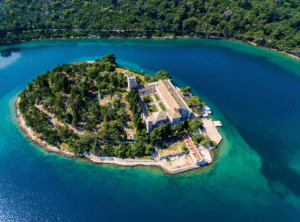
Have you ever dreamed of exploring a place where nature’s beauty and unique water worlds combine into one incredible adventure? Mljet National Park, Croatia’s southernmost national park, offers just that—a lush island paradise shaped by two stunning saltwater lakes surrounded by untouched Mediterranean forest.
This park isn’t just picturesque. Established back in 1960 as Croatia’s very first marine protected area, it covers the northwest third of Mljet Island. The two lakes, Veliko Jezero (Large Lake) and Malo Jezero (Small Lake), stretch nearly four kilometers through pristine woods, creating a peaceful oasis for explorers and nature lovers alike.
What makes these lakes extra special is how they connect to the Adriatic Sea through the narrow Solinski channel. This natural passage acts like an amazing filter: it keeps out big marine predators and plastic debris, so the water stays incredibly clear and clean. Swimming here feels just right—not too salty or buoyant, making it a safe and refreshing splash spot for visitors of all ages.
If you want to get off the beaten path, renting an electric bike is the perfect way to see more of the park. The flat terrain around the lakes is easy to ride, and these bikes make hopping between villages and hidden trails a breeze. Don’t miss a hike up to Montokuc summit, where breathtaking views of the lakes and the Adriatic stretch out below—this spot is a well-kept secret for many visitors!
Water lovers will find kayaking here especially rewarding. Launch your kayak where the small lake meets the large one, a lively area filled with friendly facilities like rental shops, cafés, and restrooms. Just be mindful of the strong currents popping up in certain spots, kayakers who keep a close eye stay safe while discovering unique parts of the lake no land explorer can reach.
Right in the heart of Veliko Jezero sits Melita Island (also called Sveta Marija), a tiny island jewel that’s only accessible by regular boats running from either side of the lake. Its star attraction is a
12th-century Benedictine monastery turned cozy café-restaurant—a serene place to enjoy a meal surrounded by water. This island, along with nearby Roman ruins at Polače, offers a glimpse into the rich history threading through the park’s landscape.
For those who love snorkeling, the Great Bridge area is a can’t-miss spot. Thanks to the park’s strict protection, underwater life thrives here, giving snorkelers crystal-clear views of Mediterranean sea creatures and ecosystems that are increasingly rare along busier coasts.Mljet National Park invites you to dive into its peaceful waters, bike its hidden trails, and soak in history, wrapped in natural beauty that feels like a secret waiting to be discovered.
5. Vis Blue Cave Excursions
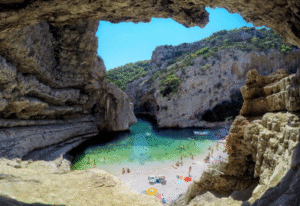
Have you heard about the magical Blue Cave on Biševo Island, just off the coast of Vis? It’s one of Croatia’s most breathtaking natural wonders, famous for its glowing blue water that looks like something out of a fantasy. This amazing effect happens because sunlight sneaks into the cave through an underwater entrance about 1.5 meters below the sea’s surface. The light bends and reflects off the limestone floor inside, bathing everything in a stunning azure glow that’s been enchanting visitors since the late 1800s.
Getting to the Blue Cave is half the adventure. Tour operators usually run a two-step boat system: a speedboat whisks you on a scenic 40-minute ride from Vis Town to Biševo Island, then smaller, specially designed boats take over to squeeze through the cave’s narrow entrance. This opening was carefully expanded back in 1884 so boats can get in without disturbing the cave’s incredible natural magic.
Inside, space is tight and the water quite deep, so visits are timed to last about 15 to 20 minutes. This helps keep the experience peaceful and allows multiple groups to enjoy the cave each day. Keep in mind, though, that weather plays a big role. Rough seas or bad conditions can close the cave to visitors entirely, making it a famously weather-dependent must-see.
Many tours combine the Blue Cave visit with island hopping around Vis and nearby spots, including a swim at the secluded Stiniva Beach, reachable only by boat and swim. These full-day excursions, typically lasting around seven hours and costing between €500 and €620 for small groups, offer a great way to explore some of Croatia’s most stunning coastal scenery in one trip.
If you want the cave at its most dazzling, aim for a mid-morning to early afternoon visit, when the sun’s angle floods the cave with the brightest blue light. Booking ahead is a smart move—especially during peak tourist season, as spots fill quickly and weather conditions can be unpredictable.
6. Alyki Ancient Ruins
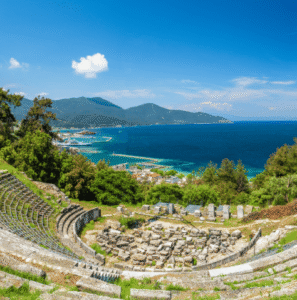
If you love history that comes alive beneath your feet (and even under the water), the Alyki Peninsula on Thassos is going to capture your imagination. This quiet southern tip of the island hides a rare overlap of eras: once a bustling marble quarry in Roman times, later transformed into an early Christian religious site, all set against a shimmering Aegean coastline. Few places in Greece let you see ancient industry and faith literally sharing the same ground.Wandering around the site, it’s impossible to miss the marks of Roman engineering brilliance. Along the shore, and even just below the surface, you’ll spot precision-carved channels where white marble was cut and moved. These weren’t just any stones: archaeological analysis shows they met the exacting standards for imperial Roman projects across the eastern Mediterranean. The Romans even used the sea itself. Harnessing clever hydraulic techniques to slide massive blocks straight onto waiting ships. Today, on calm days, snorkelers can trace these underwater cuts and imagine the industrial rhythm that once filled this bay.
Above the quarry, history takes a spiritual turn. Two early Christian basilicas sit where pagan commerce once thrived. The larger 5th–6th century complex still clings to traces of its mosaics and finely worked stone, hinting at the wealth and devotion poured into its creation. The smaller chapel, partly protected for centuries by wind-blown sand, is startlingly well preserved, a rare time capsule of northern Aegean church architecture, untouched by later rebuilds that often blur original details elsewhere.
Part of Alyki’s magic is how you can explore it your own way. A coastal walking path delivers you right to the ruins, with nearby beaches inviting a post-hike swim. For another perspective, boats can circle the peninsula, giving you a feel for how ancient ships once approached these shores. If you’re up for a swim, the shallow, clear waters over the submerged quarry make for an easy and rewarding snorkel. Calm conditions here often let you linger and take in the views below for as long as you like.
What really sets Alyki apart is its restraint. There’s no over-restoration, no glossy reconstructions to “fill in the gaps.” Instead, the site is left largely as it is. Shaped by wind, weather, and time. You get to see the ruins as archaeologists do, piecing together stories from the stones themselves. Land meets sea, industry meets faith, and Roman practicality meets Byzantine devotion — all in one compact, stunningly preserved peninsula.
7. Sri Lankan Hidden Gems
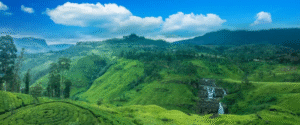
Think you know Sri Lanka? From the usual stops like Sigiriya’s fortress or Kandy’s temples? Think again. This small, teardrop-shaped island packs in so much culture and nature that it offers experiences far beyond the regular tourist path.
With eight UNESCO World Heritage sites squeezed into just over 65,000 square kilometers, Sri Lanka is a treasure trove for travelers craving something authentic and off the beaten track. Whether you’re exploring ancient ruins or soaking up the local vibe, this island promises surprises at every turn.
beach lovers, you’re in luck year-round thanks to Sri Lanka’s clever weather rhythms. The southwest monsoon brings rains to the west and south from May to September, while the northeast monsoon spices up the east coast from October to March—meaning there’s always a sunny shore waiting for you. Catch world-class surfing at Arugam Bay on the east coast when the west side gets wet and wild.
History buffs will find themselves in awe at sites like Anuradhapura, home to the 2,300-year-old Sri Maha Bodhi Tree, a true Buddhist treasure grown from the original enlightenment tree. Nearby, you can marvel at the Jetavanaramaya stupa, one of the tallest ancient structures in the world, showcasing engineering skills way ahead of its time.
Then the hill country, where you can visit working tea plantations in Nuwara Eliya. At over 1,800 meters above sea level, these areas not only grow world-famous Ceylon tea but also protect unique wildlife in lush forests. Don’t miss the scenic train ride over the Nine Arch Bridge in Ella, a stunning example of colonial-era craftsmanship.
If wildlife is your thing, Sri Lanka’s compact size lets you see elephants roaming in the wild one day and whales breaching off the coast the next. It’s nature-packed adventures without long travel times.
For a deeper cultural touch, step beyond the usual temple tours and soak in roadside monks’ morning blessings or listen to ancient chants filling temple halls, experiences that many visitors miss but locals cherish as the true spirit of Sri Lanka.
This is the “underrated magic” that Sri Lanka’s locals talk about—the authentic connections waiting when you stray from the usual tourist trail.
More and more travelers are making a shift—from chasing name recognition to seeking genuine connection. And the data backs it up. By blending smart destination research with local insight, it’s clear that people now value the story and soul of a place over its Instagram fame. Forward-thinking travel strategies focus on destinations that give back: where every visitor helps fund conservation, keep traditions alive, and preserve the environment instead of overwhelming it.
If that sounds like your kind of trip, now’s the time to act. These locations won’t stay under the radar forever. Visiting early means pristine landscapes, one-on-one encounters with locals, and the kind of travel memories that big bus tours can’t deliver. Start planning your 2025 escape with intention and see how choosing the right place can completely transform the way you experience the world.